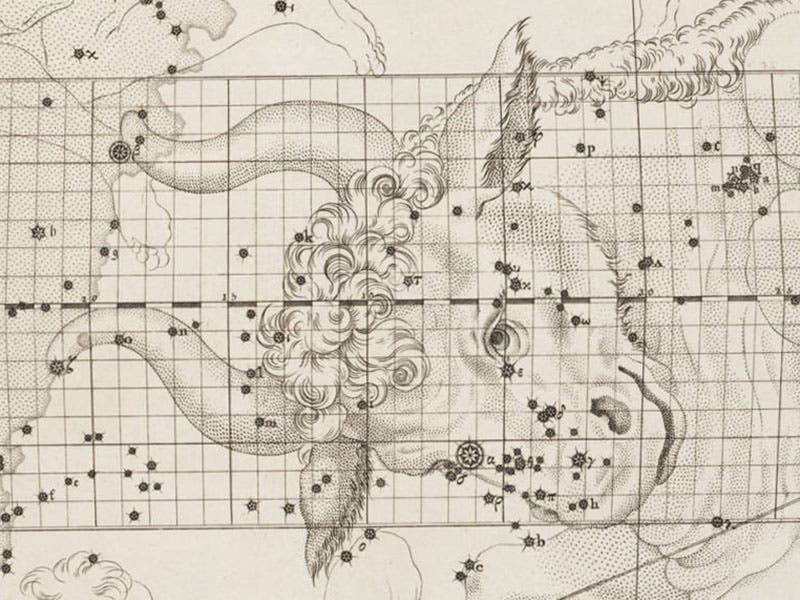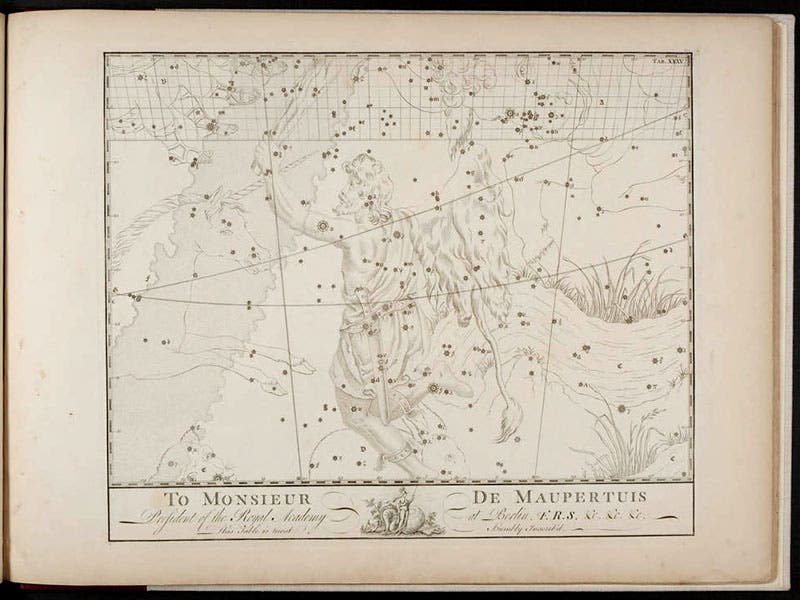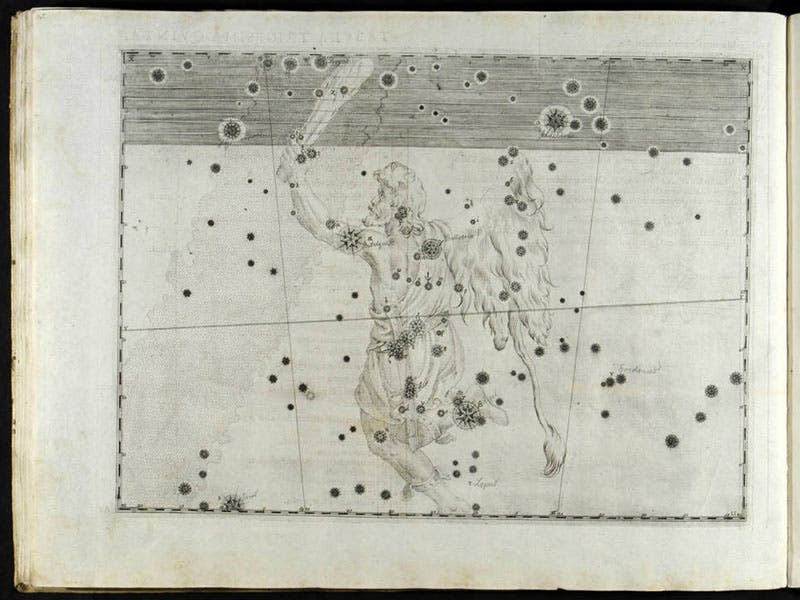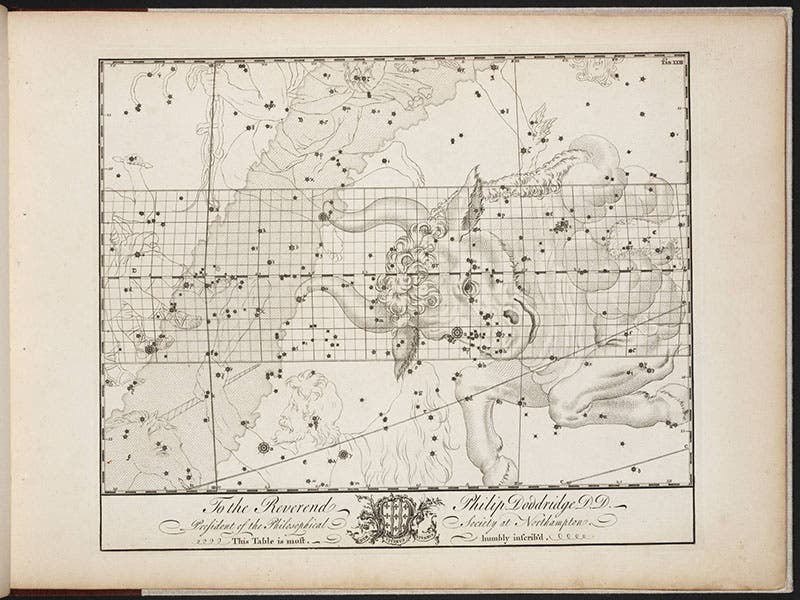Scientist of the Day - John Bevis
John Bevis, an English astronomer, was born Nov. 10, 1695. In 1745, Bevis set about publishing a new star atlas, intended to replace the celestial Atlas of John Flamsteed (1729). Bevis acquired subscribers, had the copper plates for the star maps engraved, and even pulled a number of prints from each plate. Unfortunately, around 1750, his printer went bankrupt, the plates were sequestered by the court, and the intended Uranographia Britannica was never published. However, a number of pre-publication proof sets survived, and we are fortunate to have one of these in the History of Science Collection. It even includes a handsome frontispiece (second image).
Bevis's Uranographia was modeled after Johann Bayer's Uranometria (1603), often called the first modern star atlas. Bayer’s Uranometria had 48 large engraved star maps, one for each of the 48 classical constellations, plus a 49th plate that showed the new southern constellations. Bevis's atlas has 49 plates as well, with each plate exactly the same size as those of Bayer, and utilizing the very same constellation figures, so that at first glance, they appear quite similar. But a closer look reveals important differences. Bevis’s charts have more stars, they are more carefully placed, and the bright, first-magnitude stars are not nearly so large and garish on Bevis's maps as they are in Bayer. If your compare the map of Orion in the Bevis atlas (third image) with the corresponding Orion chart of Bayer (fourth image), you will appreciate some of these differences.
Further comparison will reveal one of the principal novelties of Bevis’s Uranographia: it includes many more of the deep-sky nebulae that the age of the telescope had revealed (Bayer's atlas had been published before the telescope had been invented). We often call such nebulae "Messier objects," because Charles Messier catalogued 103 of the brightest nebulae in 1781, and there are nine Messier objects on the plates of Bevis’s' Uranographia, five of them never before been included in any star atlas. The most famous of these is M1 (the first nebulae in Messier's later list), often called the "Crab nebula," a nebula that Bevis himself discovered in 1731. On Bevis's Taurus plate (fifth image), you can spot M1 just above the star in the tip of the lower horn of the Bull, represented by a cloudy symbol. We show a close-up of that region in our first image.
Dr. William B. Ashworth, Jr., Consultant for the History of Science, Linda Hall Library and Associate Professor, Department of History, University of Missouri-Kansas City. Comments or corrections are welcome; please direct to ashworthw@umkc.edu.











![Using an astrolabe to measure the depth of a well, woodcut in Elucidatio fabricae vsusq[ue] astrolabii, by Johannes Stöffler, 1513 (Linda Hall Library)](https://assets-us-01.kc-usercontent.com:443/9dd25524-761a-000d-d79f-86a5086d4774/a998eb50-55d2-4a88-ace2-a50aa5fa86e7/Stoffler%201.jpg?w=210&h=210&auto=format&fit=crop)